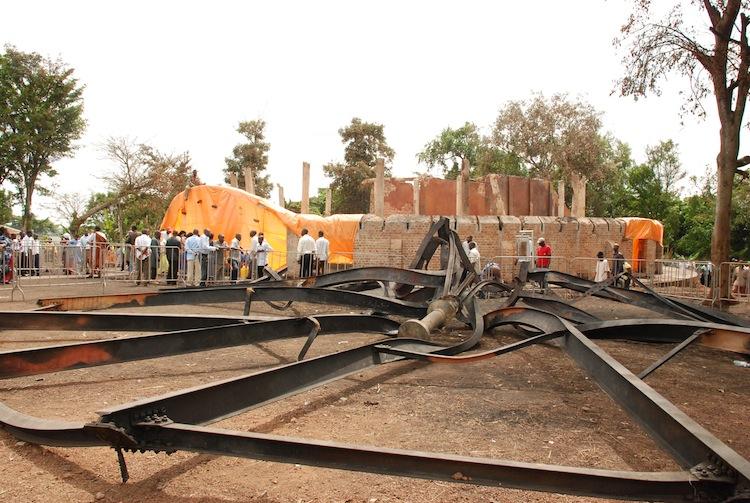VANCOUVER—An air quality study released Monday advises against adding any new sources of air pollution to the Fraser Valley’s sensitive airshed—including one or more waste incinerators proposed for Metro Vancouver.
“The Fraser Valley is already the subject of considerable scientific attention by virtue of its complex topography and the nature of its air pollution chemistry,” said University of British Columbia Professor Ian McKendry, author of the study, in a press release.
“Given forecast population growth, rising background pollutant levels, and global climate change, the addition of any new sources of combustion in the Lower Mainland, including mass burn waste incineration, is simply not advisable.”
Commissioned by the Fraser Valley Regional District, the study notes that “serious and reasonable” concerns regarding the impact of mass waste incineration on human health must be addressed before moving forward with the proposal.
The study compares the Lower Fraser Valley to other air quality “hot spots” such as the Los Angeles basin, Tokyo, and Mexico City. It also makes the point that locations in Europe that already have waste incinerators do not generally share the same complex airshed characteristics as the Fraser Valley.
McKendry, a professor of the Geography Department at UBC, reviewed the current geographical and meteorological conditions, concentrations, and sources of air pollution, and the impact of this pollution on human health in the Lower Fraser Valley.
He then factored in the potential impact of additional waste incineration in B.C.’s Lower Mainland.
“There is a large body of credible published evidence to suggest that there is sufficient cause for concern around the potential health risks posed by modern waste incinerators, especially from dioxins and nano-particles,” he said.
“At a minimum, the current research suggests the adoption of the ‘precautionary principle’ when evaluating the merits of additional waste incineration in the Lower Mainland.”
Given the region’s rich agricultural base, there is also a concern that air pollution may have an impact on vegetation, including economically important crops, as well as the general ecological health of remote sites in the region.
“This study highlights the growing risk and uncertainty associated with the health impact of incinerator emissions and reinforces the need to take every precaution before agreeing to add additional sources of pollution to the air we breathe,” said Patricia Ross, chair of the Fraser Valley Regional District.
“Given the increasing risk we face, the people of the Fraser Valley deserve to see an open and informed examination by a provincially appointed independent entity.”
The study also found that because of a significant upward trend in pollution that comes across the Pacific to the Fraser Valley from growing sources in Asia and beyond, air pollution is no longer a local problem.
“The Fraser Valley is already the subject of considerable scientific attention by virtue of its complex topography and the nature of its air pollution chemistry,” said University of British Columbia Professor Ian McKendry, author of the study, in a press release.
“Given forecast population growth, rising background pollutant levels, and global climate change, the addition of any new sources of combustion in the Lower Mainland, including mass burn waste incineration, is simply not advisable.”
Commissioned by the Fraser Valley Regional District, the study notes that “serious and reasonable” concerns regarding the impact of mass waste incineration on human health must be addressed before moving forward with the proposal.
The study compares the Lower Fraser Valley to other air quality “hot spots” such as the Los Angeles basin, Tokyo, and Mexico City. It also makes the point that locations in Europe that already have waste incinerators do not generally share the same complex airshed characteristics as the Fraser Valley.
McKendry, a professor of the Geography Department at UBC, reviewed the current geographical and meteorological conditions, concentrations, and sources of air pollution, and the impact of this pollution on human health in the Lower Fraser Valley.
He then factored in the potential impact of additional waste incineration in B.C.’s Lower Mainland.
“There is a large body of credible published evidence to suggest that there is sufficient cause for concern around the potential health risks posed by modern waste incinerators, especially from dioxins and nano-particles,” he said.
“At a minimum, the current research suggests the adoption of the ‘precautionary principle’ when evaluating the merits of additional waste incineration in the Lower Mainland.”
Given the region’s rich agricultural base, there is also a concern that air pollution may have an impact on vegetation, including economically important crops, as well as the general ecological health of remote sites in the region.
“This study highlights the growing risk and uncertainty associated with the health impact of incinerator emissions and reinforces the need to take every precaution before agreeing to add additional sources of pollution to the air we breathe,” said Patricia Ross, chair of the Fraser Valley Regional District.
“Given the increasing risk we face, the people of the Fraser Valley deserve to see an open and informed examination by a provincially appointed independent entity.”
The study also found that because of a significant upward trend in pollution that comes across the Pacific to the Fraser Valley from growing sources in Asia and beyond, air pollution is no longer a local problem.



